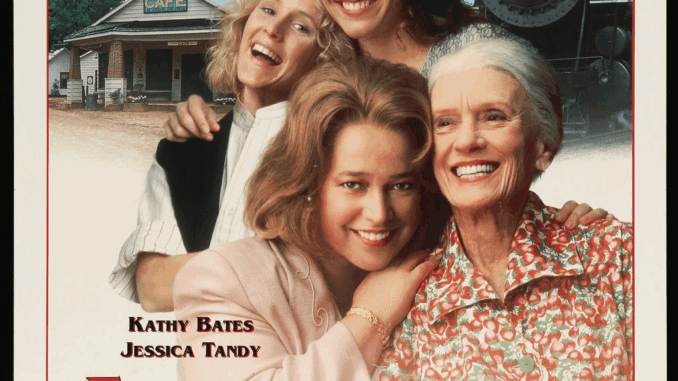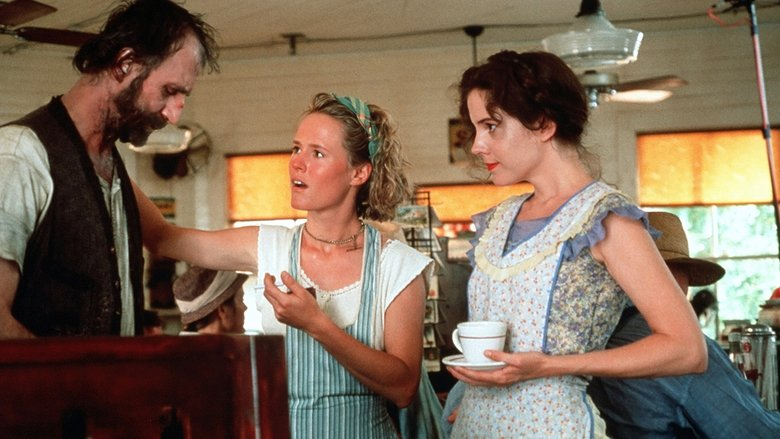
When Fried Green Tomatoes hit theaters in 1991, nobody expected it to become a timeless classic. But here we are, more than three decades later, and people still talk about it as if it came out yesterday. What’s the secret? It’s more than just great acting or a strong script it’s the way this movie speaks directly to our hearts.
The Origin of Fried Green Tomatoes
Before it became a blockbuster, Fried Green Tomatoes was a bestselling novel by Fannie Flagg. The book’s heartfelt storytelling and Southern charm made it the perfect candidate for adaptation. Director Jon Avnet took on the challenge and brought those unforgettable characters to life on screen.
A Star-Studded Cast That Delivered
One of the main reasons for the movie’s success lies in its cast.
-
Kathy Bates (Evelyn Couch): A frustrated housewife who learns to stand up for herself. Bates turned Evelyn into a relatable character for women everywhere.
-
Jessica Tandy (Ninny Threadgoode): The wise, witty storyteller who bridges the past and present.
-
Mary Stuart Masterson (Idgie Threadgoode): A rebellious, fearless woman ahead of her time.
-
Mary-Louise Parker (Ruth Jamison): The gentle, kind-hearted counterpart to Idgie’s wild spirit.
Each actor brought authenticity and raw emotion, making their characters unforgettable.
Two Stories, One Heartbeat
The film cleverly weaves together two timelines: the present-day friendship between Evelyn and Ninny, and the 1920s tale of Idgie and Ruth. This dual narrative structure creates depth, connecting viewers to both the past and present while showing how stories shape our lives.
Themes That Resonate Universally
Why do people keep watching Fried Green Tomatoes? Because its themes never get old.
-
Friendship and loyalty that stand the test of time.
-
Empowerment especially for women learning to reclaim their voices.
-
Resilience in the face of tragedy and injustice.
-
Love in all its forms, from platonic to romantic, unspoken but deeply felt.
The Idgie and Ruth Relationship
Perhaps the most talked-about element is the bond between Idgie and Ruth. Though never explicitly labeled, their relationship radiates love, care, and devotion. In many ways, it was groundbreaking for the early ‘90s, offering subtle but powerful LGBTQ+ representation.

The Power of Storytelling
At its core, Fried Green Tomatoes is about storytelling itself. Ninny’s tales don’t just entertain Evelyn—they transform her life. The movie reminds us that stories carry healing power, guiding us through our own struggles.
The Iconic Whistle Stop Café
Who could forget the Whistle Stop Café? It’s more than just a setting—it’s a character in itself. The café becomes a safe haven, a place where community, laughter, and even heartbreak unfold. And yes, it gave us the unforgettable symbol of fried green tomatoes.
Food as a Symbol of Memory and Love
Food isn’t just background detail in this movie—it’s a symbol. The fried green tomatoes represent warmth, tradition, and shared moments. Just as food connects people in real life, the dish connects the characters and the audience alike.
Tackling Social Issues with Grace
The film isn’t all smiles and nostalgia. It bravely tackles racism, domestic abuse, and gender inequality—issues still relevant today. By blending heavy themes with humor and hope, Fried Green Tomatoes managed to educate without preaching.
Cinematic Excellence
From the warm, rustic cinematography to the moving score, the movie’s production values amplified its message. Every scene feels soaked in Southern charm, pulling viewers into a world that feels both nostalgic and timeless.
Awards and Recognition
While not a massive Oscar sweep, the film did earn critical acclaim. Jessica Tandy received a nomination for her performance, and the film gained recognition for its screenplay and emotional impact. More importantly, it won the audience’s heart, which is the truest award.
Why It Stands the Test of Time
Most movies fade after a few years, but Fried Green Tomatoes remains relevant because it’s more than entertainment—it’s an emotional journey. It makes us laugh, cry, and think about our own relationships. That’s timeless cinema.
Cultural Impact Beyond the Screen
After the film, fried green tomatoes became more than a Southern dish—they became a cultural phenomenon. Restaurants started adding them to menus, and fans associated the dish with comfort and nostalgia. The movie seeped into popular culture in ways few films ever do.
Lessons We Can Take Away
-
Be brave enough to live authentically, like Idgie.
-
Value friendships that lift you up.
-
Don’t underestimate the healing power of shared stories.
-
Sometimes, comfort food and good company are all we really need.
Conclusion: The Secret Ingredient
The secret behind Fried Green Tomatoes’ success isn’t just one thing. It’s the perfect recipe of heartfelt performances, relatable themes, a strong narrative, and the magic of storytelling. It’s a film that doesn’t just entertain—it lives inside you long after the credits roll.
FAQs About Fried Green Tomatoes
1. Was Fried Green Tomatoes based on a true story?
No, but it was inspired by Fannie Flagg’s novel, which drew on her Southern upbringing.
2. Where was the movie filmed?
The film was primarily shot in Juliette, Georgia, which later turned into a tourist attraction thanks to the movie.
3. What does the title symbolize?
The fried green tomatoes symbolize comfort, memory, and the bonds between characters.
4. Is the relationship between Idgie and Ruth romantic?
The movie keeps it subtle, but many interpret their relationship as deeply romantic, rooted in love and loyalty.
5. Why is the film still popular today?
Because its themes—frie
